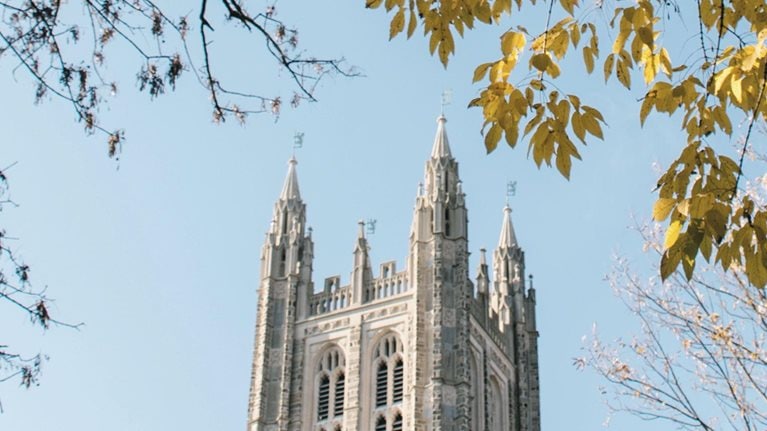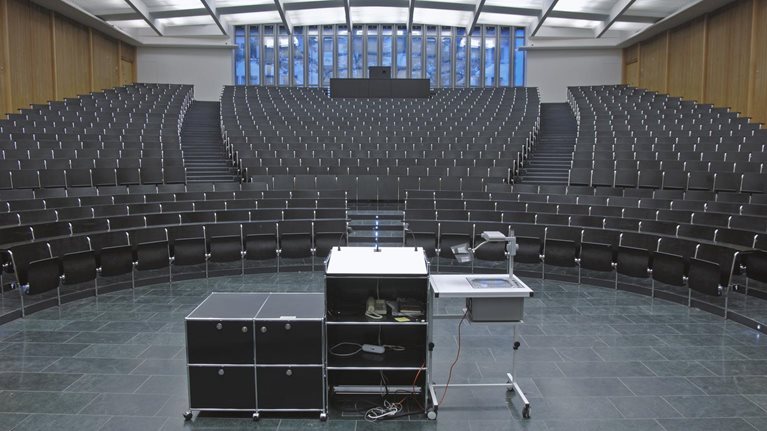As of mid-April, 191 countries had shut down all their primary and secondary schools, affecting almost 1.6 billion children (Exhibit 1). The shift to remote learning has been uneven. Some systems were able to train teachers, roll out remote learning, and put in place student support services in less than a week. Others are still struggling, constrained by lack of access to technology or expertise. The disparity is obviously true between countries; it is also true within them. Given that K–12 education in many countries is predominantly a local responsibility, students can live relatively near each other yet face very different prospects.

Addressing these inequities in a remote-learning environment is a complex challenge. School systems need to adapt across many dimensions, while serving students from a variety of backgrounds. Vulnerability comes in many forms; low-income students, immigrant students, ethnic or religious minorities, students with special needs, students in remote rural areas, and those in risky home situations all need tailored strategies.
Furthermore, there is no clear picture of how long a model of predominantly remote learning will need to continue. Some children could be back at their desks by late April; for others, it could be much later (see sidebar, “The 5 Rs of getting back to school”).
There are four priorities for school systems: maintaining health and safety of students, staff, and the community; maximizing student learning and thriving; supporting teachers and staff; and establishing a sound operational and financial foundation. In each case, we believe that issues regarding equity—that is, ensuring that the needs of the most vulnerable are met—should be front and center, both during the closure and after students return to school.
Maintain health and safety. The coronavirus is not the only threat to student health and safety. Low-income students often depend upon schools for basic nutrition. Home may not be a safe place for others. And the combination of concern over the viral threat and social isolation presents a challenge to the mental health of students and staff alike.
There is much that school systems can do to help. Many US school districts, including those in Los Angeles, New York, and Seattle, have repurposed closed schools and community centers to offer lunch to needy students. The British and Spanish governments are providing vouchers or redeemable credit cards to students. The next step is to work with community organizations to extend nutrition and other services to the whole family. The UN’s World Food Programme (WFP) is working with developing-country governments so that students and their families receive food through take-home rations, home delivery of meals, and vouchers.
Schools also provide other forms of support. One British school calls vulnerable children every day, and visits (keeping physical distance) in person if there is no answer. Other systems are collaborating closely with local law enforcement and social services to ensure child safety.
To support student mental health, it isn’t enough to shift existing counseling services online, though that is a good start. For the highest-risk students, there needs to be continuous evaluation and monitoring, and outreach is essential to identify and serve new cases. In the United States, the Centers for Disease Control and Prevention (CDC) and the National Association of School Psychologists have released resources including checklists for behaviors and reactions to be aware of, as well as methods to reduce stress and anxiety. If needs grow, governments may want to consider contracting with private providers for additional capacity to provide mental health support. Community-building activities can also maintain social connections between students. One California elementary school district created a “sidewalk chalk walk”; the school encouraged students to decorate their sidewalk, then provided a map to walk the neighborhood and admire their friends’ art.
As the initial coronavirus curve flattens, governments and school systems need to make hard choices on when and how to reopen schools, for which subpopulations, and with what set of health and safety protocols. As they do this, a different set of vulnerable students and staff may emerge—those living with elderly or immune-compromised families, for example, and those who are particularly susceptive to infection themselves. Some form of remote learning will therefore probably need to be sustained, even after schools open their doors again. Perhaps older or immune-compromised teachers can continue working safely from home to maintain remote learning for students who are not able to return to school.
Student and staff health needs will not end with the virus—schools should plan to deal with heightened mental and physical health issues long after the pandemic subsides. With many parents out of work or forced into debt, schools may also have to deal with broader economic vulnerabilities, and respond through specific programs for homeless students, clothing closets, and the like.
Maximize student learning and thriving. Even in times of crisis, education matters. Delivering quality instruction is clearly a challenge in current circumstances; the magnitude of the challenge, however, varies widely. Technologically-advanced systems have been able to roll out synchronous and asynchronous online learning; less developed ones are using a combination of television, radio, paper packets, and cell phones. Some are struggling to deliver even that, and their students will have considerable catching up to do.
The imperative right now is to get remote learning to as many students as possible, with special attention to the most vulnerable students and schools. In districts where resources, expertise, and leadership are available, it is possible at least to get started in as little as one to two weeks, and then to create processes to foster continuous improvement (Exhibit 2).

Access to devices and internet connectivity is uneven even in affluent districts in developed systems. Addressing that is a critical first step to ensure equity. France is lending devices and providing printed assignments to students who don’t have access to computers or the internet, while China is offering mobile data packages and telecom subsidies; it has also repurposed segments of the state-run television channel to air lesson plans for K–12 education in remote regions. South Carolina schools have deployed mobile hot spots to low-income neighborhoods by equipping school buses with Wi-Fi. In Portugal, the government is pursuing a partnership with the post office to deliver worksheets for students with no internet access. Where expanding access to devices and broadband are not an option, then design and setup of remote learning needs to be adapted to the technology that does exist—be that television, radio, cellphones, or paper-packet delivery.
Providing access to all is only a start. Some students need more support, for example because of language barriers, working parents, or learning or physical disabilities. To narrow this equity gap, resources need to be disproportionately directed to those with the greatest needs. Supporting parents is a critical piece of this puzzle. Many parents are balancing their own remote work responsibilities with helping children with schoolwork; others have lost their jobs and are struggling to remain afloat. Schools can help by making things simple for parents: clear communications with what is expected and required, and step-by-step guidelines are most useful. Long lists of online resources, tools, and activities are helpful additions, but only in so far as they don’t cause overburdening or unrealistic expectations.
To provide more direct student support, schools can start internally, planning academic interventions in small groups for those with specific needs. Eventually, partnerships with external providers and nonprofits may be required. In the United States, a nonprofit tutoring network, UPchieve, has expanded access to offer free online math tutoring for low-income high-school students; the New York Public Library is working with a virtual tutoring network to offer help in both English and Spanish. Parents can also be part of the answer. The Los Altos School District in California has set up a parent-led tech team within each school to provide technical support to students and their families.
Another vexing issue is what to do about assessments and grading, given that end-of-term examinations have been largely cancelled. For students struggling with the prerequisites of remote learning, including just finding a quiet place to study, figuring out what constitutes a fair grading system will not be easy. Systems are experimenting with a variety of options.
The United Kingdom has announced that students will get “calculated grades” based on their prior attainment and teacher assessment. The United States has exempted states from federal testing requirements for the rest of this academic year; the states themselves can decide whether to cancel other assessments and address the needs of students who have not met graduation requirements—for example, through a portfolio appeals process. In Australia, the state of New South Wales is proceeding with its higher school certificate but is giving greater flexibility to schools to decide how assessments are carried out. Whatever approach is taken, equity must be part of the process and care should be taken not to institutionalize existing biases. For example, a number of studies have shown that teacher assessments systematically underestimate scores for minority students—and artificial-intelligence (AI) systems are only as good as the data entered into them.
The depth and breadth of these and other inequities will become apparent once students return to school. Remediation will be particularly challenging if school budgets are cut due to lower tax revenues and growth. This is not a reason to lose hope. After the Ebola epidemic, Sierra Leone put in place a rapid-cycle program to get students back to grade level. There were special programs for pregnant teenagers, concerted efforts to build confidence in health and safety measures, psychosocial training for teachers, and simplified lesson plans focusing on the most critical elements of the curriculum.
Adjusting the school calendar might help: school boards in India are already devising different academic calendars to compensate for lost learning, and some US states are investigating such options as expanding summer school or starting the 2021 school year earlier. Systems may face difficulties around teacher contracts, parent consent, and student motivation, but these can be anticipated and then overcome. These are not ordinary times, and ordinary measures will not suffice to protect needy students from learning loss and keep them on a path toward graduation and employment.
Support teachers and staff. Much is being demanded of teachers, many of whom have young children of their own to look after even as they are learning whole new ways of teaching. They deserve—and need—the support of their school systems.
The type of support needed will depend greatly on the maturity of the school system. Teachers in countries at the “poor-to-fair” stage (with PISA1 scores under 480) will need more guidance, and would benefit from having centrally provided content for their students. Teachers in countries at the great-to-excellent level (with PISA scores over 520) could use a more cooperative approach, getting tools and resources, but shaping them to meet their students’ needs. Collaborations with other teachers, too, will be critical, both within specific schools and more broadly. In South Korea, the Education and Research Information Service offers an online platform to facilitate sharing of materials by teachers. In the United States, many existing teacher-collaboration platforms including Teachers Pay Teachers and BetterLesson are sharing tips for remote teaching.
Some schools will need more support than others, depending on their academic performance, history, and number of vulnerable students. Effective government intervention can help to narrow social inequities between schools in the same system by both channeling financial resources, and offering intensive support to high-need schools.
Meanwhile, students are not the only vulnerable populations within school systems. Many of the operational staff employed by schools—janitors, food-service staff, and bus drivers, for example—live paycheck to paycheck. As many of these positions are no longer needed for remote schooling, schools face the difficulty of balancing fairness to their workers with the need to preserve budgets for student learning. These needn’t always be a zero-sum game. Some systems are redeploying nonutilized staff to deliver meals and perform tasks related to health and safety requirements. Staff in one rural Oregon school district prepare 750 breakfast and lunches per day, which are then delivered by bus drivers as they travel their typical routes. Other systems are redeploying school inspectors as coaches or curriculum advisors.
Ensure a strong operational and financial future. School systems need to start planning for different epidemiological and economic scenarios, and be ready to adapt if their budgets are cut. Hard decisions are going to have to be made at every level. There are no easy answers. However, even if funding falls, it will remain important to keep these equity issues front of mind.
There are some things that schools can start doing now—for example, looking for savings in areas such as utilities and transportation, and asking vendors for discounts. There is a limit to what schools and school districts can do alone, however. Many will have to seek additional funds to help their students recover, whether from governments, bilateral donors, or philanthropists. Creating post-coronavirus budgets needs to be a joint process between schools, which understand the needs on the ground, and district, state, and federal governments, which may be able to provide access to resources. Collaboration across the public, private, and nonprofit sectors may become easier to achieve.
Crises can be a spur to creative problem solving. Under the pressure of the COVID-19 crisis, school systems can take the chance to rethink some of their traditional ways of doing things. As school systems emerge from the pandemic, it will be important to identify innovations that can be sustained into the “next normal”; innovations that can improve student learning, but also contribute to a firmer financial foundation.
In the last few hectic weeks, school systems have worked hard to meet the immediate challenge of continuing to educate their students. Much remains to be done, and different systems are at very different stages of the crisis—from resolve to resilience to beginning to return. Across all five steps, school systems should think in integrated ways about how to support the neediest students. By devising ways to narrow these equity gaps, school systems can play an important role in helping societies pull together, not apart.


